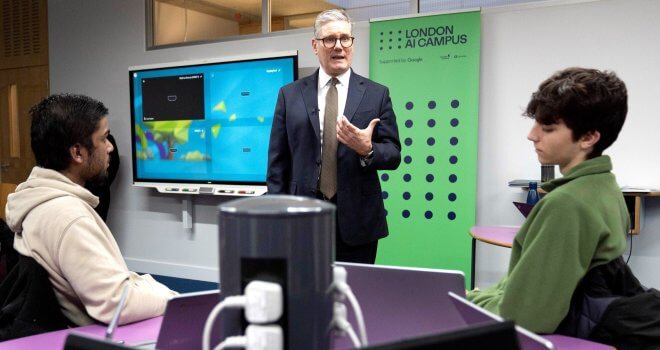How To Get The Most Out Of Focus Groups And Brainstorming

Data gathering is often the first technique we employ in a process. Before we can transform process inputs into outputs we often need to gather additional information.
In this context, an input is any document, information, or other item that is needed to conduct a process. An output is any document, information, product, or other item that is the result of a process.
Some of the data gathering techniques entail collecting data from individuals or groups, such as focus groups and brainstorming. Some techniques entail collecting information by using tools such as checklists and check sheets.
Benchmarking and statistical sampling collect data from procedures that have been performed many, many times by multiple people or even machines.
As with all techniques, you can use multiple methods to gather data. Use the methods that are easiest to gather the most complete and accurate information you need for your project.
BRAINSTORMING – WHAT IT IS
Brainstorming is used as a technique for generating ideas and options and solving problems. It is generally a group activity that has a facilitator to manage the process.
Brainstorming focuses on generating quantity, with the assumption that having a good quantity of ideas will lead to having a good-quality outcome.
In the brainstorming session there is no criticism, all ideas are equal, and all are welcome, including those that seem like they are wild ideas. Various techniques can then be used to evaluate ideas gathered in order to help identify viable alternatives.
Often during the process ideas will build on each other and the synergy of the group will produce better results than one person, alone, could come up with.
HOW TO USE IT
Use the steps below as a guideline. Tailor the steps as necessary to work within your environment or to work with the brainstorming variation you choose.
- Identify the problem, goal, or outcome for the brainstorming session.
- All members of the group state their ideas.
- Record all ideas.
If time allows, the ideas can be elaborated, analyzed, or prioritized.
Scenario: You are managing a project to develop a new company intranet site.
As the project manager you want to get some ideas for content, design, and requirements. You bring in people from various departments to help brainstorm some ideas that you will later prioritize and send out for the rest of the organization to comment on.
You decide to use some variations on the traditional brainstorming technique by using a group passing technique, some electronic brainstorming, and individual brainstorming.
Group passing technique.
To gather high-level requirements, you give each person a category of requirements to work on. You ask each person to write down his or her requirements and then pass it to the next person, who adds his or her requirements. This continues until everyone has commented on each category.
Individual brainstorming.
Rather than being done in a group, individual brainstorming is done as an individual. This can take the form of free-writing, free-speaking, or drawing a mind map.
You ask your brainstorming group to come up with some ideas for the design and graphical user interface (GUI) for the website. You tell them they can use freewriting, picture creation, mind mapping, or any other form of communication for their ideas.
Electronic brainstorming.
In this brainstorming technique you ask the group to contribute in an online environment. You post the content topic in an online bulletin board or chat room and people respond.
Electronic brainstorming can permit a large number of ideas to be gathered very quickly because there is no turn-taking. People can respond as soon as they see other ideas, and the energy can build on itself.
Electronic brainstorming has been found to generate more ideas and be of greater quality than in-person brainstorming. However, it requires a moderator to ensure anonymity does not lead to disrespectful interactions.
Electronic brainstorming can also take place over a longer period of time, allowing for more reflection. You choose how long to allow the bulletin board to be posted, allowing people to log in and contribute as they are able.
Additional Information
Brainstorming can be used with focus groups. Combining brainstorming with the nominal group technique allows the ideas to be prioritized for further elaboration or to reach a decision.
PMBOK® Guide – Sixth Edition References
4.1 Develop Project Charter
4.2 Develop Project Management Plan
5.2 Collect Requirements
8.1 Plan Quality Management
11.2 Identify Risks
13.1 Identify Stakeholders
FOCUS GROUPS
WHAT IT IS
A focus group is a group of prequalified people who are brought together to provide information about a product, service, or result. A professional moderator uses a question guide to focus the direction of the questions. The moderator also observes behaviors and nonverbal cues and records them in her observations.
HOW TO USE IT
Focus groups are most commonly used for new product or new service development. They may be part of a market research campaign to gather requirements or to provide insight into customer opinions, expectations, desired benefits, underlying assumptions, common views, and so forth.
- Establish your goals or desired outcomes for the focus group.
- Develop a discussion guide that provides a focus for the group, but also allows some open conversations that are not driven by the moderator.
- Find a qualified moderator. You may want to hire a professional moderator to lead the group. Your moderator should have at least these qualifications:
- The ability to be friendly, nonjudgmental, flexible, and open. He or she needs to stay on topic, ask open-ended questions, and manage the conversation so it is productive and not combative.
- He or she should have some understanding of the new product or service, but not have a vested interest in the outcomes.
- Determine how to record the session, either with video, audio, or a note-taker.
- Set up the meeting logistics such as time, location, date, and duration.
- Identify and invite the participants. Ideally you want a cross section of potential end users and customers.
- At the opening of the meeting:
- Thank participants for attending.
- Review the purpose of the meeting.
- Review the flow of the meeting, guidelines, ground rules for participation, and so forth.
- During the meeting:
- Ask open-ended questions to start a topic; use closed-ended questions to gain clarity.
- Make sure everyone is participating. You may need to call on some people to get their feedback.
- Summarize information, rephrase questions if necessary, employ active listening, and ask for comments about responses.
- Ask if there are any other comments or thoughts before moving on, and before wrapping up the meeting.
- Thank the participants for coming.
- Assess the data and look for patterns, themes, unexpected outcomes, and new questions that may have arisen.
Scenario: You are the project manager for a project to implement a childcare facility for your organization’s employees.
The Project Charter has been developed. You are meeting with 12 parents at your organization who currently use childcare facilities. They work in different departments, have children from three months old to four years old, and hold a variety of jobs.
You want to use the focus group to understand the expectations and attitudes about the curriculum, play time activities, and food. You decide to be the note-taker and you have asked Roberta, the Director of Human Resources, to facilitate the session.
Roberta doesn’t have a personal relationship with any of the participants and she is skilled in listening, drawing people out, and creating a nonjudgmental environment.
You set up the meeting for lunch time two weeks in the future. You will provide pizza and soda for the participants. Roberta opens the meeting with general questions about what people are looking for in a childcare facility.
From there she asks questions about the ratio of skill development versus playtime, the types of indoor and outdoor play time equipment the parents would like to see, and their thoughts on snacks and lunches.
As the meeting closes the parents are excited about the new childcare center and make themselves available for any future questions. The information you gained will help you put together an RFP for playground equipment and food vendors.
You will provide the information on the curriculum and skill development to the director of the childcare center to help him develop the roadmap for learning.
Additional Information
Some focus groups offer incentives, including cash for participation.
Focus groups generally provide broad qualitative information. The interactions and body language provide a deeper understanding of people’s opinions than questionnaires.
The qualitative information can then be analyzed and can be followed up with questionnaires and surveys to get quantitative data by asking ranking questions or closed-ended questions.
PMBOK® Guide – Sixth Edition References
4.1 Develop Project Charter
4.2 Develop Project Management Plan
5.2 Collect Requirements
This is an edited extract from A Project Manager’s Book of Tools and Techniques (A Companion to the PMBOK® Guide – sixth edition) by Cynthia Snyder Dionisio, due to be published by Wiley, June 2018.




